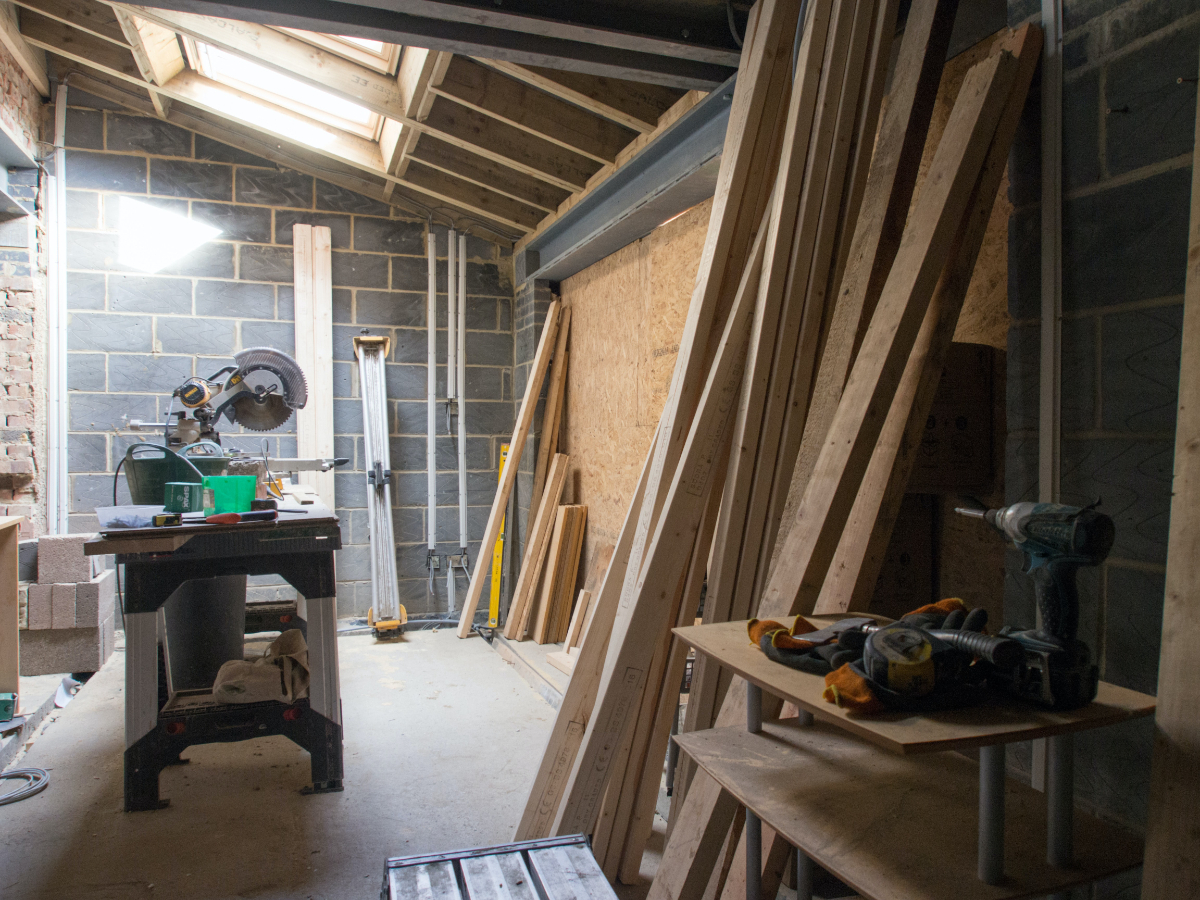This article asks: why do properties need to be converted and adapted? Trimble Architects provide commercial property development services in London. Find out more about the various considerations in relation to adaptation and conversion projects.
What is the Conversion and Adaptation of buildings?
Conversions and adaptations are two different ways of changing a property. Those looking to convert or adapt a building will use its inherent qualities to make the best changes. Therefore, some buildings suit conversions, while others are better suited to adaptation, depending on what is most cost-effective and practical.
Conversions involve changing the main function of the building or how it is used. This can include changing a domestic home into a series of flats. You might also convert old commercial properties into residential flats if the change is practical.
Adaptations are similar but less dramatic. They involve making changes to the property to permit a new use or requirement. Rather than changing the purpose of the entire property, adaptations change smaller features to meet these new needs. Before embarking on a conversion or adaptation, you need to carry out thorough research. Learn everything you can about the structural properties of a building and the fabrics it is made of. When you know all this, you can better decide if conversion or adaptation is best.
Building Adaptation Options
Again, adapting a building means changing some of its smaller features. This will hopefully allow people to use the building for a new purpose. Essentially, adaptation is one step up from the regular maintenance work that every building requires. Adjusting a building beyond maintenance changes can change the capacity of a building, its function or how it is supposed to perform for the people using it. The range of changes you can make during an adaptation is vast.
Therefore, the range of adaptations you can perform is also very large. It's easy to get lost in the possibilities. But, if you stay focused on what you want to achieve for your property, your options should be easy to see. From adaptations meant to preserve the property to completely reconstructing it, focus on the purpose of your changes and you'll know what to do.
Alternatively, if you're completely lost, you can consult professional advice. Speaking to architects and designers may give you a better idea of what adaptations to make. Some common adaptations people perform include:
Refurbishments
Remodelling
Renovations
Restorations
Retrofitting
Repairs
There are also three broad categories of adaptations: small, medium and large scale.
Small-scale adaptation
Small-scale adaptations, as the name suggests, involve surface-level changes. You won't make any changes to the deeper fabric or structural elements of the building.
This can involve upgrading certain aspects of the property or making minor alterations to the surface materials. One change that falls into this category of adaptation is re-roofing. Changing, upgrading or replacing the surface materials of your roof is an adaptation, just a small-scale one.
Other changes include re-painting, laying new flooring, fitting new doors and windows or replacing kitchen and bathroom fittings. There are some structural changes that could be placed in this category.
Loft conversions or making openings for new windows are small, singular jobs. And while they will affect the deeper structural elements of your property, they are still only small-scale adaptations.

Medium-scale adaptation
Medium-scale adaptations move more towards changing the structural elements of a building. Therefore, it also moves closer to a conversion, rather than a simple adaptation. But it can also mean altering the surface materials to a larger extent than small-scale adaptations. Major retrofitting could be placed in this category, but it also requires different building services.
Medium-scale adaptations extend the existing capacity of a building. This naturally involves making serious structural alterations to accommodate these changes. Most of the common medium-scale adaptations are performed on older buildings to bring them up to modern standards. Common medium-scale adaptations include:
Changing offices or residential buildings into commercial flats, or vice versa. Installing new air conditioning systems for greater climate control.
Installing better roof insulation for thermal control.
Installing new cladding, new walls or upgrading the existing cladding.
Changing the existing roof system (flat roof to sloped roof etc.).
Extending the property vertically or horizontally.
Creating new walls or removing older ones.
Creating new floors or removing older ones.
Large-scale adaptation
As the largest scale of adaptation, you can expect dramatic changes to the building when carrying these changes out. Large-scale adaptations can include thorough remodelling of the building, for both interior and exterior spaces or surfaces. Again, older buildings may need more structural adaptations to make them habitable. This potentially involves reconstructing the interior of the existing building behind the facades. This can involve large-scale structural alterations and spatial changes within the property.
The aim of large-scale adaptations is to completely alter the use of the building. Either you will increase the existing capacity of the property or change its capacity to use it differently. One of the most obvious large-scale adaptations is restorations. Restorations of ruined or dilapidated properties usually aim to preserve the exterior qualities while altering the interior ones. You can retain the exterior facades with smaller adaptations, such as upgrading and replacing the exterior materials.
But on the inside, modifications will be bigger in scale. This is especially true if you want to change the interior capacity for commercial use, such as turning one property into several rental properties. However, the type of changes you make should be determined by current market possibilities. If there's no need for rental properties in the area, then a large-scale adaptation for this purpose would be a waste of time and money.
CONSIDERATIONS IN RELATION TO ADAPTATION AND CONVERSION PROJECTS
Conversions and adaptations are major projects and they deserve a lot of thought before starting one. There's a range of work to be done before you can even begin breaking ground.
Whether you're fully converting a building for a brand new purpose or carrying out minor remodelling and alterations, there's a full range of things to consider.
Ensuring your changes will meet the new requirements of the building is the main thing to think about. As a large project, there are many issues you could encounter, and you'll need to prepare for them. You can do this by carefully considering your project from the outset.
Professional architects and designers can walk you through the process, from changing the fabric of the building to major structural alterations. They can determine if your changes are cost-effective and sensible for the area and the property in question. These professionals can also help with the paperwork side of things.

Applying for planning permission where needed. Professional project management once the work starts. Project timelines and begetting. These are all made easier when you have experts by your side helping you. Their technical knowledge and experience on previous projects put them in the best position to assist you. They can ensure your plans are practical, are worth the money and determine how long they will take.
Some of the considerations they can help with include:
Feasibility - They can determine if your plans are feasible and suggest ways to achieve your goals.
Budgets - They can determine if your plans are correct from a financial perspective, work out your budget and determine the property's increase in value.
Planning permission - As experienced property experts, they will know how to apply for planning consent that guarantees your plans will be accepted.
Building regulations - Any changes you make to a property must meet UK building regulations. Architects and designers can ensure your plans achieve this. From insulation to safety standards and fire protection, they will ensure your plans are correct.
Legal issues - Your architect can also help with your legal obligations, such as Party Wall agreements and Construction (Design and Management) Regulations.
Design - Architects can also help with spatial planning, floor plans, and aesthetic design considerations.
Architects Near Me
If you are looking for property conversion architectural services throughout Hounslow, Twickenham and the greater London area, then get in contact with our team today. We can offer advice and begin guiding you towards making the right decision.
Bob Trimble is a chartered architect registered with RIBA. Bob Trimble has 30 years of experience working with residential and commercial property projects. For 4 years, Bob Trimble has worked from his housing association and private architectural practice for clients throughout Hounslow, Twickenham, Richmond, Kingston Upon Thames, Teddington and the surrounding areas of London.


